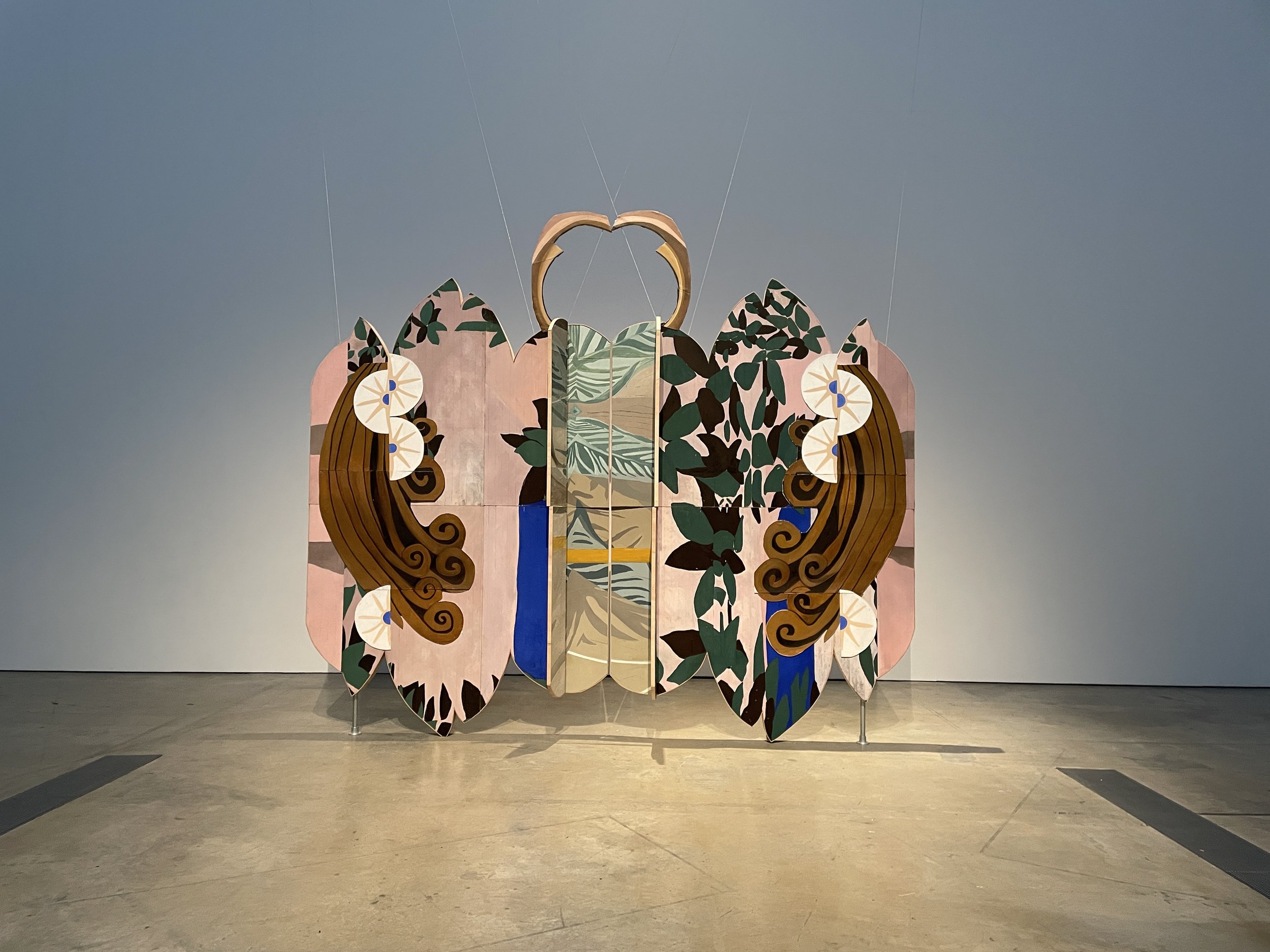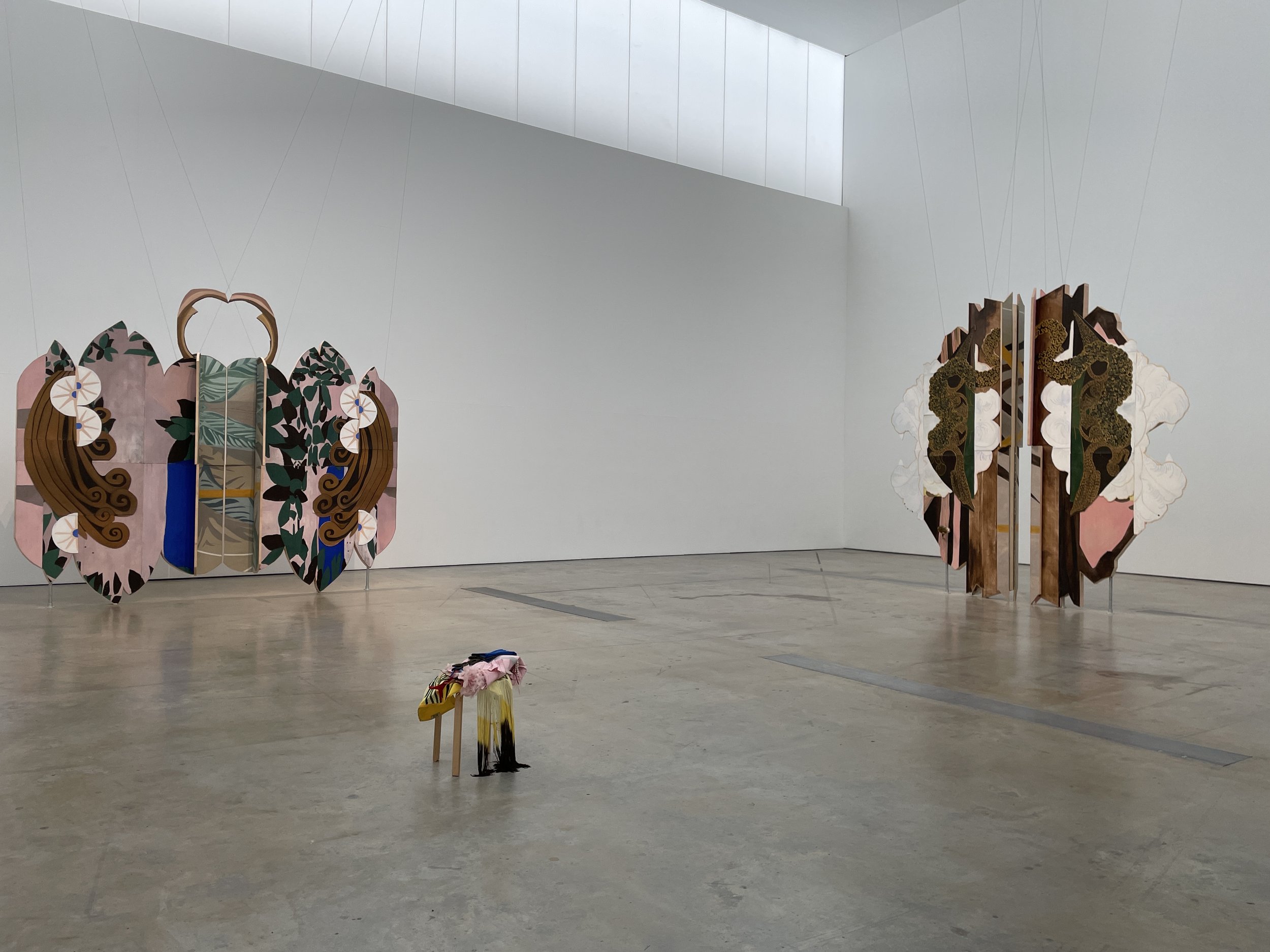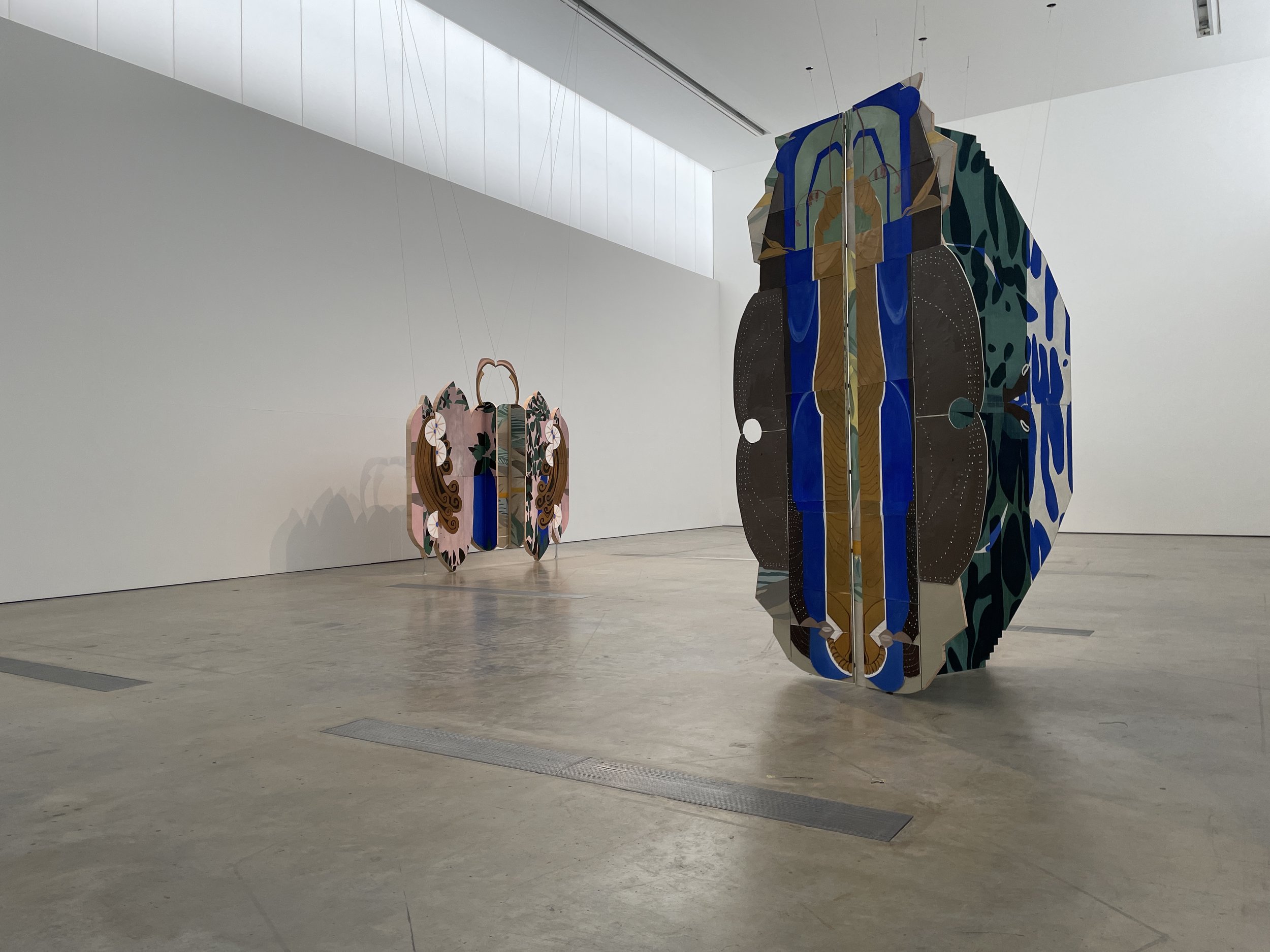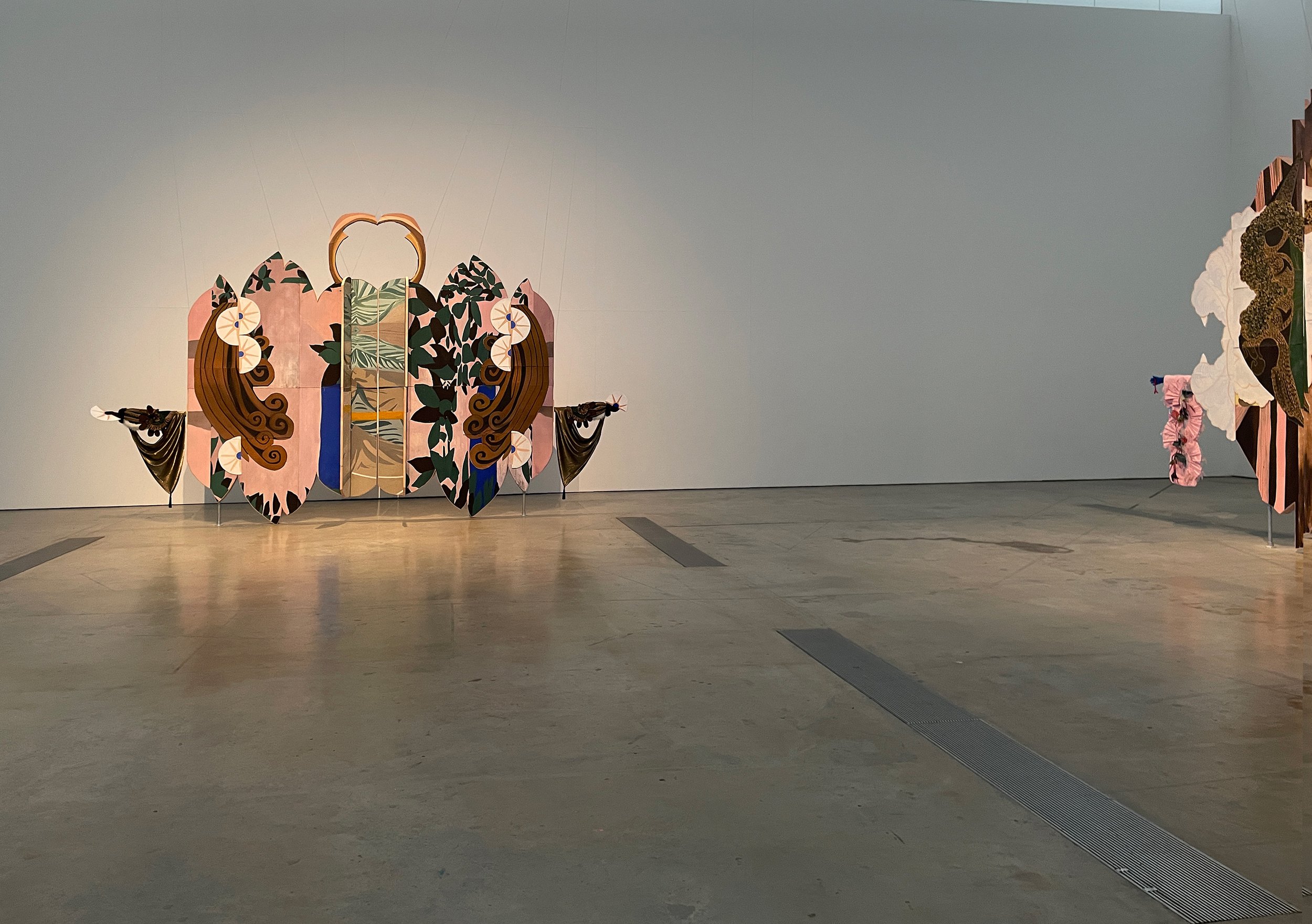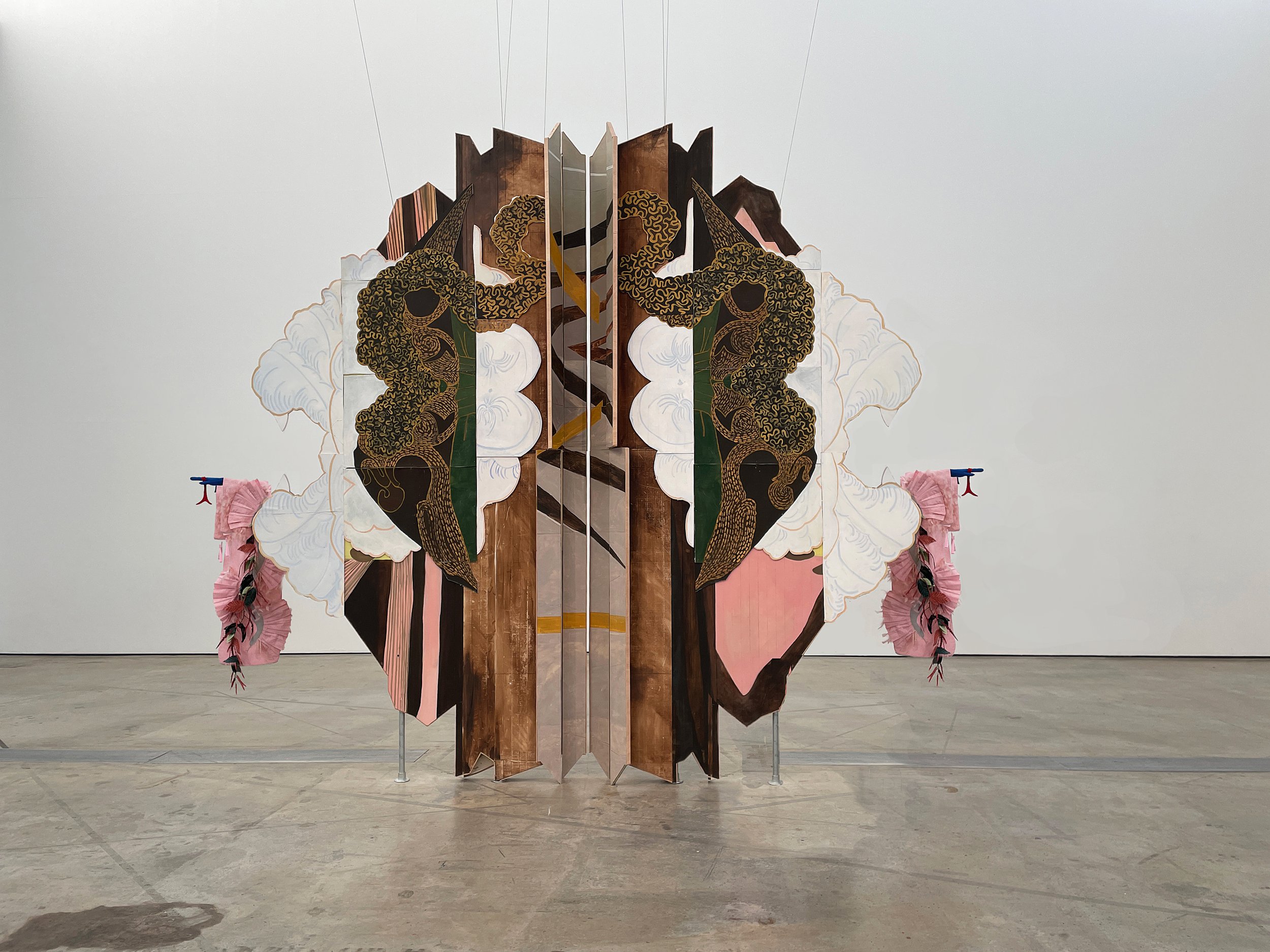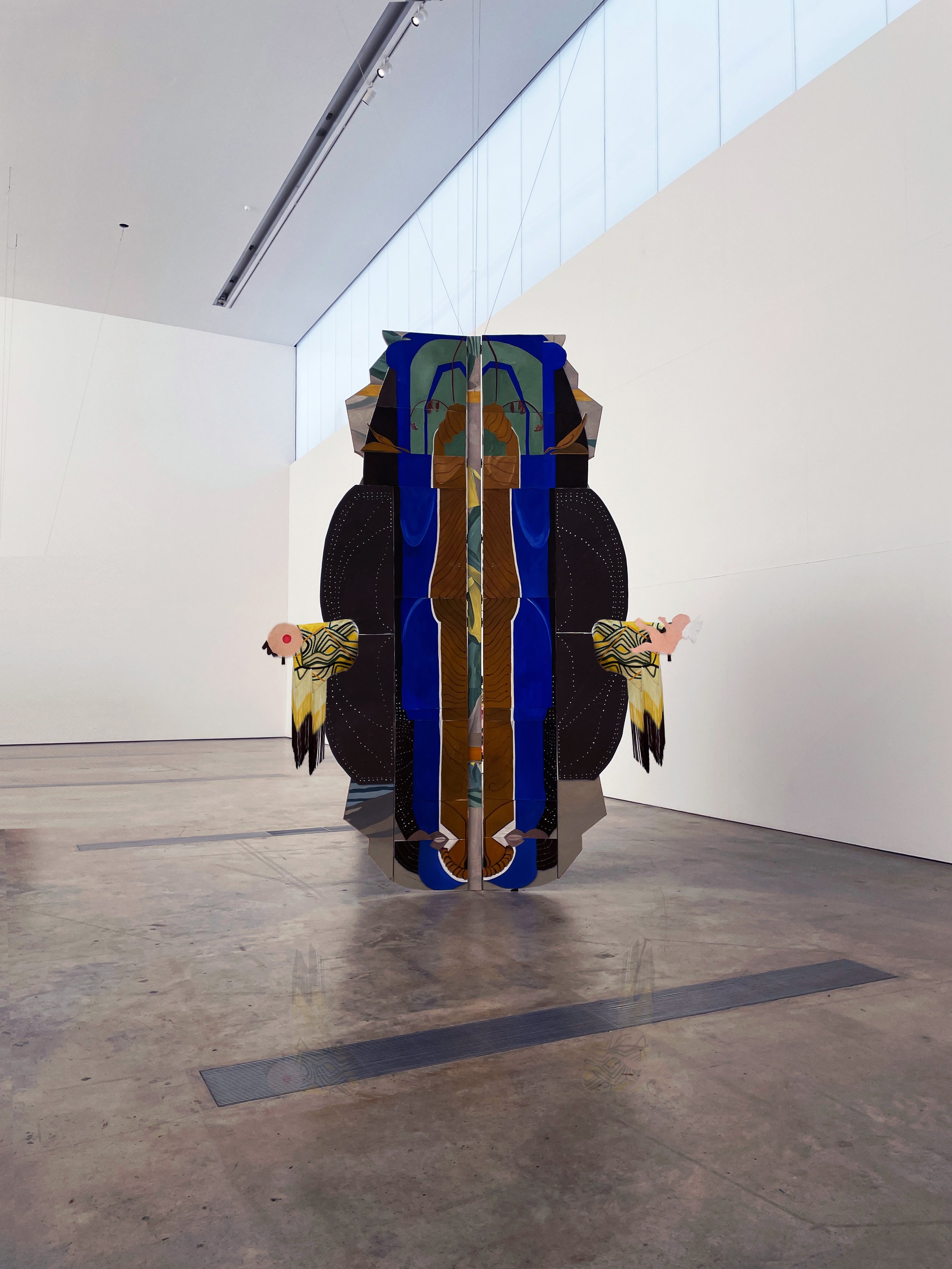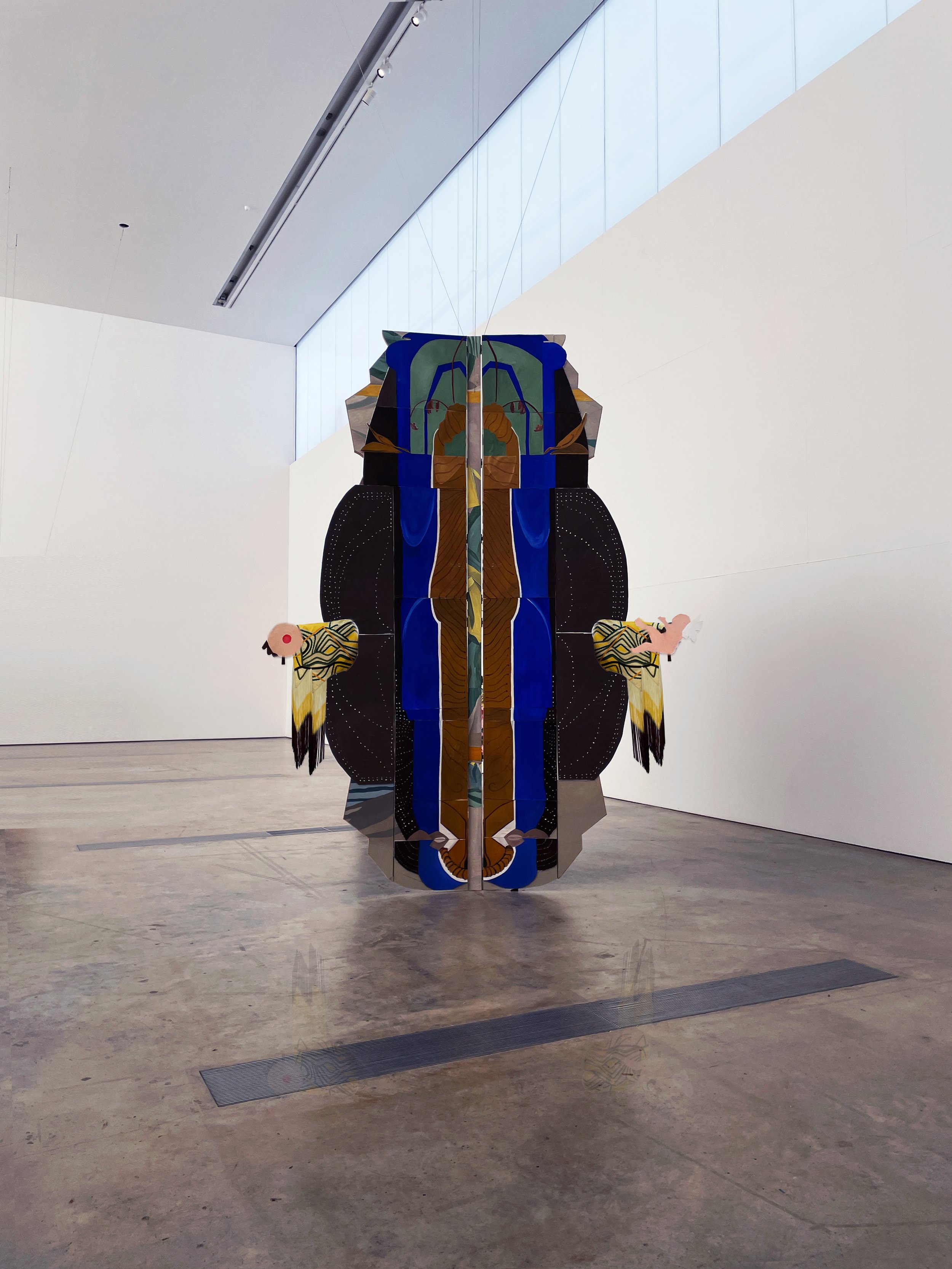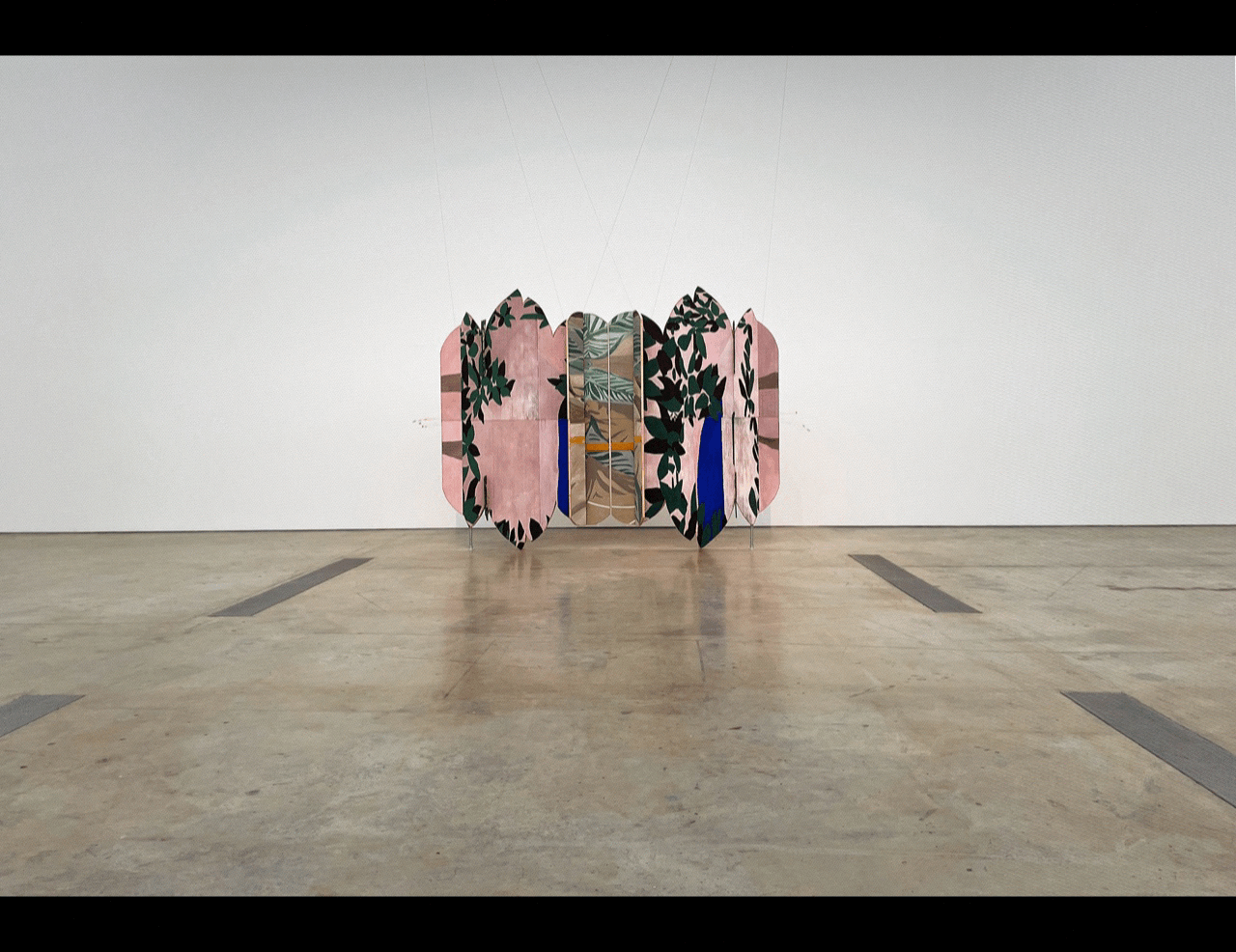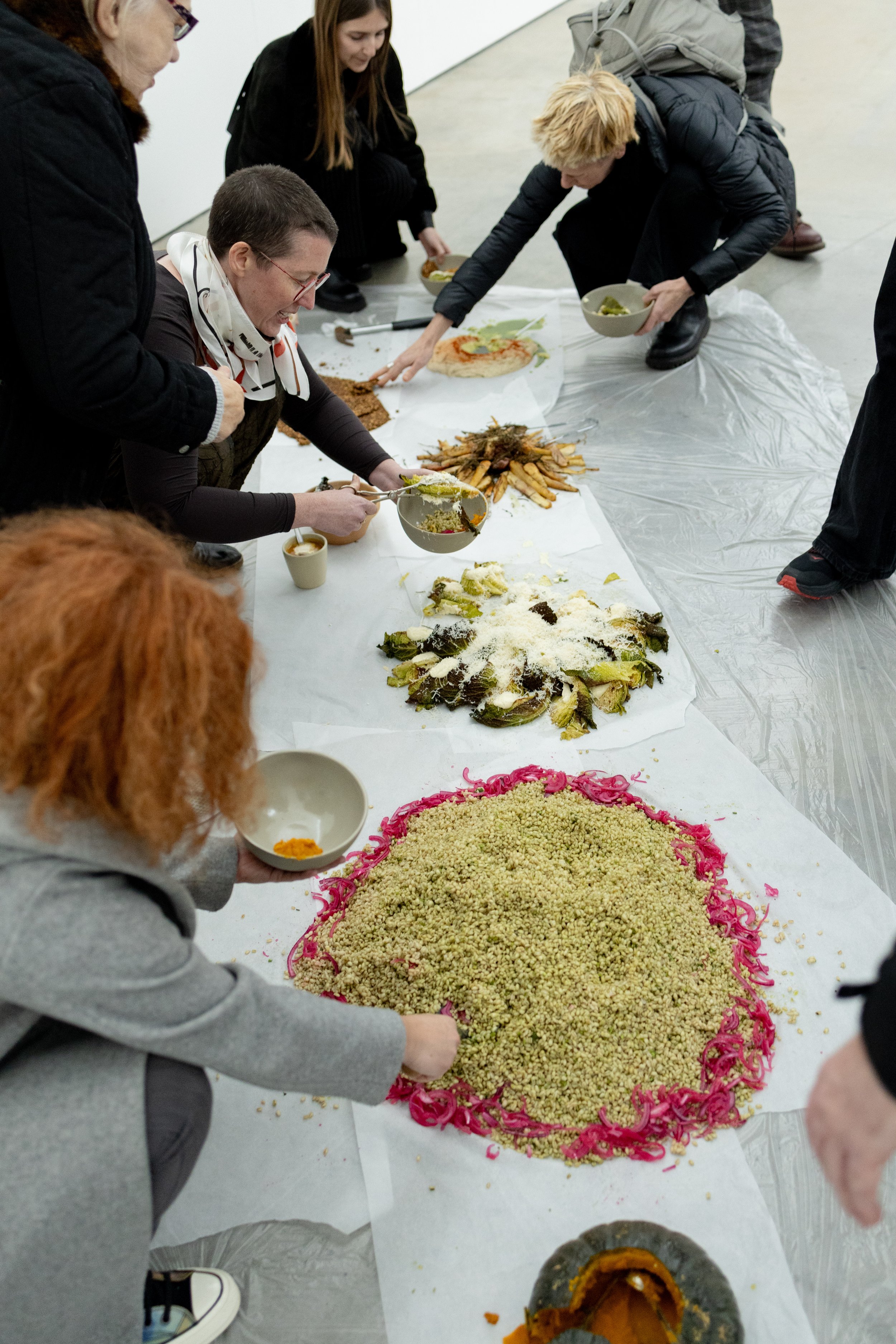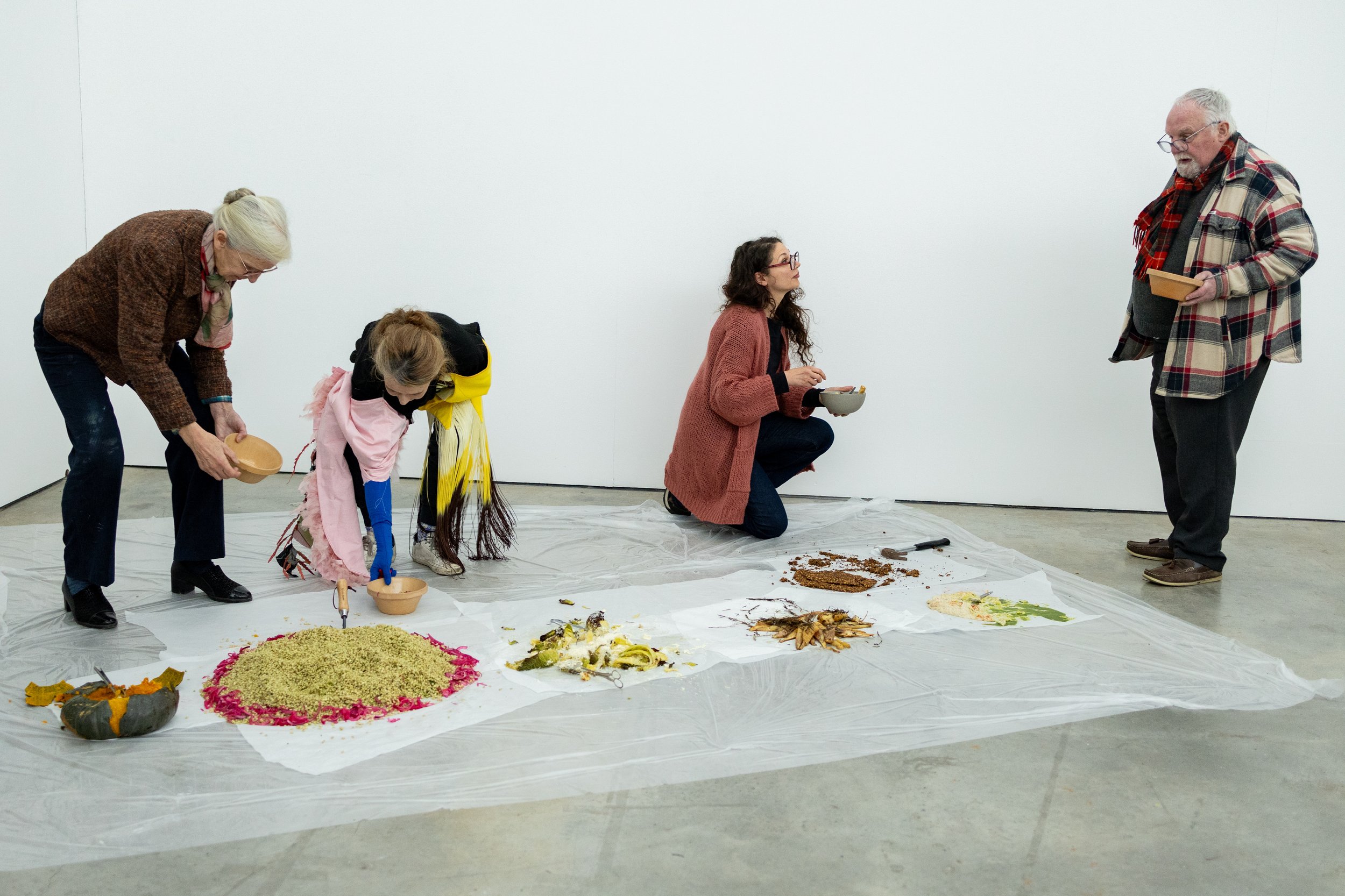VISUAL Centre for Contemporary Art
Medusa in Pieces
In adapting the myth of Medusa, a story of misrepresentation and disputed agency, the exhibition’s central looping narrative explores its own evolution from disembodiment to full constitution.
In Sonia Shiel’s exhibition, Medusa in Pieces, landscape appears to possess multi-dimensional capacity, including the possibilities of transposition, restoration, disembodiment, and prediction - the four hallmarks of magic. These landscape works share mobius-like qualities, appearing to have near continuous seams, symmetrical values, and 360-degree surfaces, and through performance generate foley and other sounds, featuring field recordings of birds, human voice, and wind. Throughout the run of the exhibition, there are three live technical performances, in which the artworks shape-shift into bloom. In each Medusa in Pieces is brought to life by specially trained performers through a choreographed sequence of doors, actions, and reveals.
Technical Performance
A 3-Act technical and accumulative performance staged over three separate shape-shifting events - bring three landscape works from disembodiment to full constitution.
Technical Performance and Collaboration
The Pulse Event Series takes its name from Elvia Wilk's analysis of Karen Russell's description of blossoming in The Bad Graft. Russell’s short story describes the relationship between the Joshua tree and the yucca moth as a metaphor for co-dependence between us and nature, and the couple at the centre of her story. Neither the moth nor the tree can survive without each other. Their relationship is consummated in a tremendous blossoming referred to by a local Mojave desert ranger as a “pulse event.” Such a term is associated with bomb test-sites, when a measurable electromagnetic pulse occurs. Invariably – a pulse event is also an immeasurable event of the heart.
As a series of workshops, devised by Sonia Shiel in collaboration with Kunstverein Aughrim, 3 Pulse Events generated opportunities for critique, and collaboration, to advance the narrative of Shiel’s project towards Medusa in Pieces, at VISUAL, Centre for Contemporary Art. These events included a Blackbox with Gaming Researcher, Benjamin Hanussek; a studio visit with Theatre Director, Anne Bogart; and a nature walk with Elvia Wilk. From these collaborations, Dress For Angles (a collection of technical exercises) was developed.
Technical Performance I
On the opening night of Medusa in Pieces, a short adaptation was performed every 30 minutes.
Four performers meet in an unannounced cluster, and create a terrain of spring boards-cum-sound boxes, on top of which, a series of props are placed, while jumping softly. These include listening horns, dried and living flowers, and candles.
In 3.5 minutes the performers elaborate on the works’ physical properties, their doors and passages. They dress the three paintings with flowers, illuminate and generate a path, retrieve a crystal ball 'hidden' within one of the works, accompanied by the sound of seeds rolling inside it, and walk the ball to a position on the terrain, singing a metronomic chant together.
It starts like a root and blooms,
Outwards and around.
And then recoils back,
Perishing.
A pulse again.
Open, and blooming again.
Closed again.
Again a pulse.
Again, again, again…
The performers locate the sound of a bird (field recorded in the Burren) from one of many holes in the three works. And, they excavate an 'echo' of their own chant, played back to them. On hearing it, the performers undo their actions - they pick the flowers, 'blow' out the lights/candles, walk the future (ball) back down the path, close all the doors, and repack the desire path, covering the holes and the sound within. The bird quietens, and the performers rejoin the crowd, leaving the landscape as it was.
The technical performances occurred with Aoibhinn O'Dea, Stephane Bena Hanly, Niall Cullen, and Isadora Epstein; sound by Liam O’Callaghan; Costumes by Amie Egan. Tech by the VISUAL team.
Technical Performance II
The technical performances are opportunities to animate and dress the works with alternate meaning, to explore their physical properties and to activate other dimensions - time, transposition, restoration, disembodiment and prediction. The opening technical performance tasks appear again throughout the exhibition’s series of events, and as a means to the exhibition’s ritualised presentations, but also in their absence - holes, occasional audio, implanted flowers, and open and closed doors - keep a pulse.
Being only a head of snakes, Medusa's power is necessarily collaborative -wild, vital, and full of surprises. In the second performance Medusa’s three Pieces become clad with extravagant facades. The path and a number of props are swapped out for other dynamics. Performers, at the event, and beyond it using members of staff - articulate the works from the inside out, in near symmetrical actions. This symmetry is exaggerated by left and right costumes worn by the performers as they go about construction. The second performance occurred over a full day, and as part of a wider event - A Different Terrain. The title of which rexplores notions of unbounded conclusion by revisiting the three exhibitions running concurrently at VISUAL, Carlow.
Technical Performance III
Medusa wears real life arms, and searches for her middle. Here, the three works perform autonomously, or so it appears. There are no performers moving around the space. They are now ‘contained’ within the structures, which open and close, wave fans, produce milk, and bleed, independently. At times the rationality of a body so emphatically announced by the two coordinated arms - is betrayed by the occasional open middle or gap in the door. Now fully equipped with enchanted hands and gloves, props with four capacities: Medusa plays three tricks with her props - Disembodiment; Transposition; Restoration; and Prediction.
The Geometry of Failure, in which Shiela Armstrong explores nature under a reign of chaos, reflects on these dimensions. "As I watched, a member of staff adjusted the installation, unfurling the wooden slats into a new shape, and it had all changed again. Now there were claws, and talons, and jutting tufts of hair. As the physical shape of the pieces moved, so too did the painted patterns and outlines, creating new levels of complexity."
Sheila Armstrong is a writer from the northwest of Ireland. She is the author of a novel, Falling Animals (2023), and a collection of short stories, How To Gut A Fish (2022).
Including A Different Terrain
In Catherine Marshall’s review of Medusa In Pieces, for the Irish Arts Review / Winter 2023 Edition, she describes the works as reminiscent of walking inside a painting from the classic days of Analytic Cubism …
‘They stand independently, like portals, painted on both sides. They all have doors, holes, hinges - these devices create the hardware for illusion. Shiel considers relationships between theatrical and the contemplative, the void and the matter that articulates it. Space and line fracture, multiple perspectives coexist - recalling the fantastic, disruptive, unresolved but ultimately seductive … ’
Photos featuring three works with glimpses of a flowered transient terrain piece (bottom left) from the first performance, by Ros Kavanagh and one work from 2021 (third page top right) - Storm for Climbing, curtesy of the Kevin Kavangah Gallery.
Supernatural Bureau is on view throughout the Autumn, closing on 1st December 2023. On 24th October, Kunstverein Aughrim will have ‘The Bones of A River and other missing topological parts, back in the bureau, and will soon be launching a limited special edition for Supernatural Bureau, as part of their Preview series. Shiel’s Pulse Events have contributed to a film by Jenny Brady and Barry Lynch, which will be screened as part of performance event at VISUAL on November 25th.

